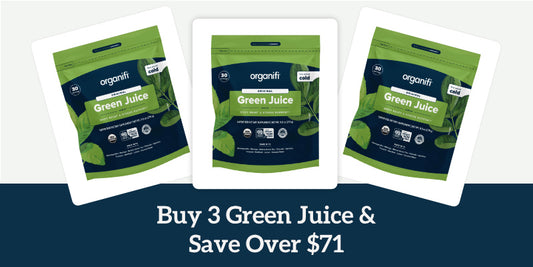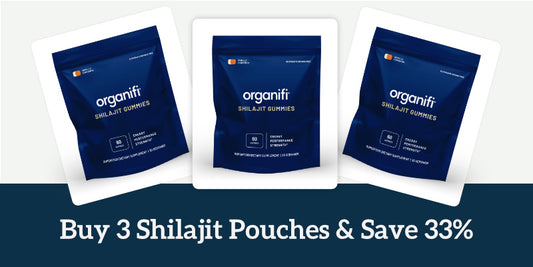Fresh fruit, freeze-dried fruit, dehydrated fruit, gently dried fruit… what’s the difference?
There’s a lot of talk on the Internet in regards to the best way to eat certain foods, but it’s not always clear what’s healthier and it can get overwhelming; one day you’re told to eat fruits and vegetables, the next some blogger is saying fruit juice has too much sugar for you.
If you’re wondering if dehydrated apple slices are “sugar bombs” and what freeze-dried fruit really is anyway. And, it may have crossed your mind that if sugar is so inescapable, you might as well drown in Skittles already.
You’re in the right place.
(But just hold off on the Skittle drowning; it’s about to get better.)
What we eat is just as important as how we eat it.
If you read our blog regularly, you probably already know this.
We’re always trying to optimize what we eat and how we do it to get the most out of it, and with good reason: the way food is made -and preserved- changes its nutritional value.
For example, it’s better to start your day with a mostly-vegetable-based green juice than a fruit-yogurt smoothie. Why? After the fasting period of the night before your body becomes a clean slate and the sugar content in yogurt and fruit could lead to an insulin spike, potentially creating more sugar cravings or energy fluctuations throughout the day.
Yogurt and fruit are most definitely not unhealthy, they just may be a better mid-morning snack than breakfast for some people. Similarly:
The nutritional value of food can be altered by its preparation or conservation process.
We can all agree it’s healthier to eat a fresh apple than drink commercial apple juice and certainly more so than eating a sugar-filled apple pie. The ingredient is the same, but the preparation affected the nutritional value.
Therefore when it comes to freeze dried fruit and produce, dried or dehydrated food, or pulverized ingredients (like dried reishi mushroom for instance), the process does matter. Let’s get into it:
Freeze Dried Fruit vs. Gently Dried vs. Dehydrated Fruit
To preserve food, we must remove the water content present in the product to inhibit the microorganisms that lead to decay and decomposition.
Dehydration, drying, and freeze-drying, remove the water content from fruits, vegetables, mushrooms, roots, meat and more to maintain the fresh food’s nutritional value (as much as possible) but extend the item’s shelf life.
You may find that people use “freeze-dried fruit” and “dried fruit” interchangeably, but they’re not quite the same thing, even if they are both removing moisture. In fact, there’s a difference between heat drying, gently drying and freeze-drying produce.
Food Dehydration and Drying
Dehydration or “drying” removes moisture to improve the longevity of produce by exposing the food to heat. There are multiple types of dehydration possible:
- Natural Sun or Air Drying: some foods can be left out in the sun, or a shaded place, to get dehydrated by solar rays or air. The most famous are probably sun-dried tomatoes. This process takes a long time, may lead to the product’s browning, and a slightly rubbery texture.
-
Hot-Air Drying: often found in home appliances, these dehydrators blow warm air over the food until it is dry. It’s an effective way to preserve food but reduces the number of recommended servings as the sugar value is concentrated in a smaller piece. If you have one of these food dryers at home, just be mindful of your portions.
- Osmotic Dehydration: combines salt and sugar based natural solutions with hot air dehydration to maintain the color, texture, and flavor, while also keeping the vitamins and minerals as close to the fresh source as possible. It is a highly recommended form of agricultural dehydration, but may slightly affect the sodium and glucose content due to the osmotic solution used prior to heating.
-
Oven Drying: Fruits, herbs, vegetables, and more release water content at temperatures of 140 to 158 Fahrenheit for extended periods of time. It is one of the least preferred dehydration processes available; the high temperature and prolonged exposure may lead to the loss of some Vitamin C, A, B, content and some antioxidants present in the fresh produce. It may also result in slight browning and a rubbery texture in fruits and vegetables.
- Drum Drying: food is dehydrating at high temperatures in short periods of time inside drums. Most of the nutritional value is retained but the drums may cause oxidation and reduce shelf life, forcing people to add artificial preservatives to the food.
Gentle Drying:
An improvement on Drum Drying, it’s a dehydration process that slowly and gently removes the 98% of the water content while retaining nutrients, color, fiber, and flavor. It is a rigorous process that preserves nutrient density.
Freeze Drying:
A new form of dehydration, freeze drying takes the raw material (like an apple or blueberry) and freezes it. Once it is frozen, the container is quickly depressurized, making the frozen water evaporate through a process called “sublimation.” It removes the “thawing” consequences where water-soluble nutrients could be lost while maintaining color, texture, and vitamins in the highest concentration.
This is a very gentle method that manages to retain the taste and nutritional value of the freeze-dried fruit or vegetable, making it one of the most effective ways to preserve fresh produce.
Research shows that freeze-dried fruit maintains 87% to 95% of their original antioxidant content.
Making it not just a great alternative source of Vitamin C, A, and B, as well as other essential nutrients, but a powerful immune system and anti-aging support.
Freeze dried fruit and veggies are also easily re-hydrated because the cell structure of the dried produce stays “open”. Freeze dried fruit, at the moment, is the best way to industrially preserve food and keep it as close to fresh as humanly possible:
- More nutrition and antioxidant power
- Better texture and flavor
- No oxidation or browning
- No added preservatives
- Natural longer shelf life
- Easy to rehydrate
You love this and are now thinking “how to freeze dry fruit at home!?” Good news and bad news, the best freeze dried fruit processors are industrial and getting one for home is very expensive, the good news? If you freeze fresh fruits and veggies and cook or eat them right after they come out of the freezer, you avoid most of the thawing nutrient loss.
Nutritional Value of Dried and Freeze Dried Fruit
Dehydration increases the concentration levels of some of the vitamins, minerals, and nutrients in food. Therefore only a small amount of produce is needed to reach your daily recommended intake of any given nutrient or antioxidants.
For example:
Iron has an RDI of 18mg per day. There are 0.3 mg in 40 grams of dried apricot, 5% the RDI, as opposed to 176g of fresh apricots needed to get the same 5%. Sugar, on the other hand, increases from 9.5% to 54.2% in dried apricots compared to their fresh counterpart.
This means that a small snack of dehydrated can help you reach your recommended daily intake goals for necessary micronutrients while keeping sugar content under control. However, freeze dried fruit helps regulate sugar blood levels even more because it also retains the fruit’s fiber.
Freeze Dried Fruit Optimizes Organifi Red Juice
At Organifi we take this knowledge seriously and we’re continually updating our resources and recipes to give you the best and most nutritionally-packed options available. That’s why in our effort to source the best ingredients we updated the Organifi Red Juice formula with freeze-dried fruit and an 8:1 Reishi mushroom content, to maximize the antioxidant powers that make this tart-sweet treat so good.
With only one gram of sugar, Orgnifi Red Juice is more berry-licious than ever. The new freeze-dried fruit process makes the texture, color, and flavor pop with freshness while increasing the bioavailability and absorption of the 11 superfoods that make this healthy blend.
Rehydrated with just a little water, it’s the closest thing to eating fresh fruit, adaptogen mushrooms and herbs, without any of the chopping, prepping or drying yourself!
Red Juice is a naturally energizing, slow-aging, and liver support, delicious drink with very little sugar.
How to Eat Dehydrated Foods
The appeal of dehydrated foods and fruits is the massive amount of nutrition you get in a small bite or drink, so if you’re ready to get more vegetable and fruit servings per day while controlling your sugar intake, take a look at these ideas.
- Try homemade dehydrated baked apple slices (and not skittles)
- Get the health benefits of dragon fruit in powder form and add it to a smoothie.
- Drink the benefits of reishi mushroom in Organifi’s Red Juice or in powder added to your coffee or tea. Dried reishi mushroom is one of the key ingredients in multiple of our unique superfood blends because they are amazing adaptogens rich in antioxidants that help balance energy.
- Dry mushrooms at home, add them to everything from risotto to smoothies.
- Consider frozen fruits and vegetables as an alternative to fresh ones, since they have a very high nutritional content and may even be better than the fresh counterpart at times.
What will you try? Let us know if this cleared your doubts and if you have any questions, drop them below, we’d love to answer!




